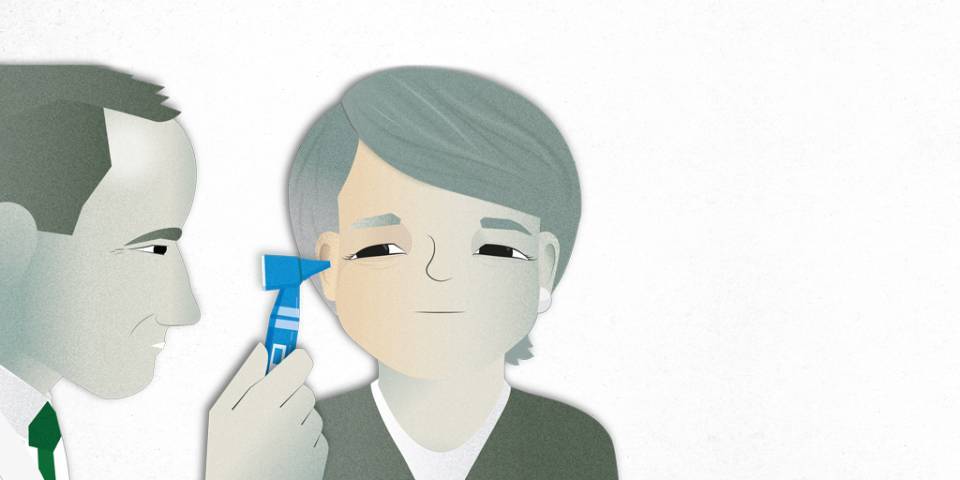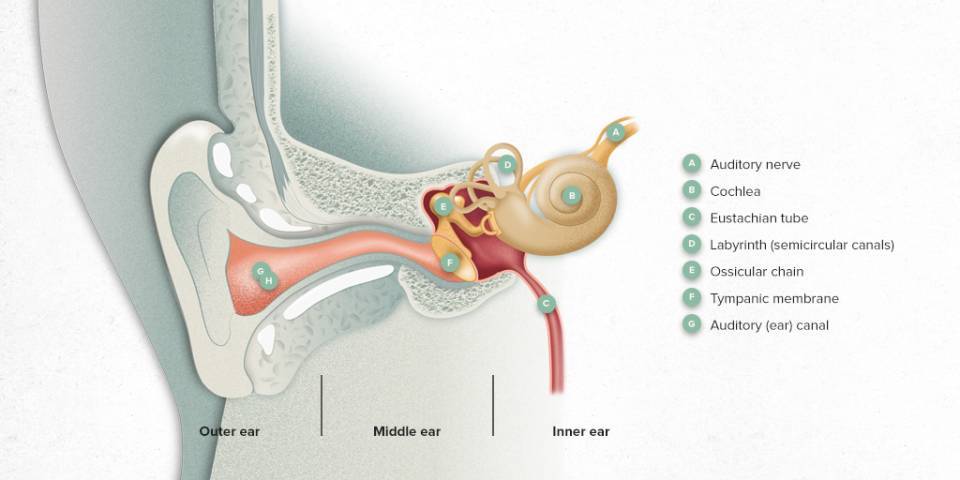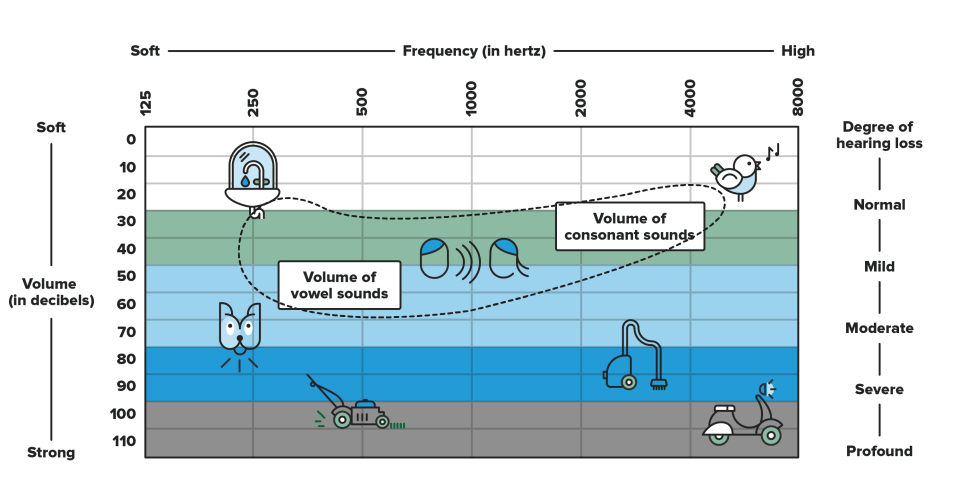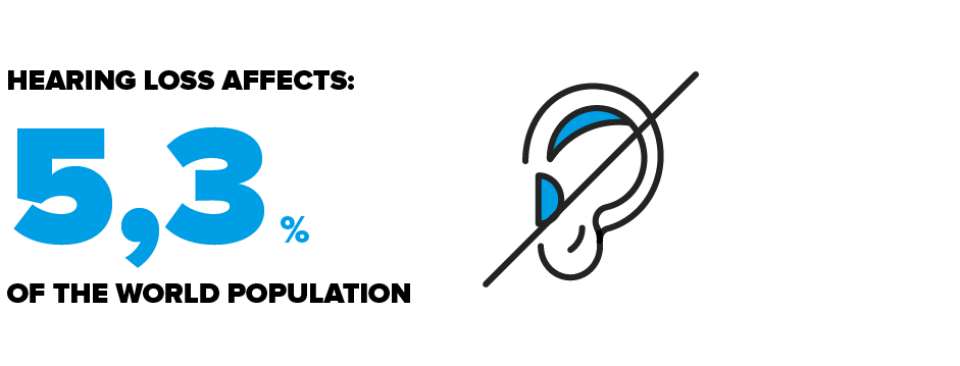What is Deafness?
Deafness, hearing loss or hypoacusis is a functional deficit that occurs when a person loses hearing capacity to a lesser or greater degree. It can occur unilaterally, when it affects a single ear, or bilaterally, when it affects both.
Deafness explained in first person
The main risk factors for deafness are poorly cured otitis and exposure to intense noise over a long time.
I would say that staying deaf is just too horrendous, you have an awful time, because you’re isolated, your character changes, you don’t think clearly. But I would also say that with the advances there are today, and the superb professionals who you can get over this and that together they will help you find the solution to your problem.
The ear can perceive sounds ranging from those which are barely audible to very loud noises, it can also differentiate the volume and distance, and identify very accurately the direction the sound was emitted from.
Human hearing works by converting sound waves into electrical signals which are sent from the ear to the brain via the auditory nerve. A person’s ability to hear depends on the correct working order of the ear’s structure, the auditory nerve and the area of the brain that receives and interprets sound.
The ear comprises three main parts:
Outer ear. Consisting of the visible part of the ear, also called the auricular pavilion, and the external auditory canal. Sound waves, transmitted by the air, are received and guided by the outer ear to the eardrum, a flexible, circular membrane that vibrates when the sound waves hit it.
Middle ear. This space is full of air and separated from the outer ear by the eardrum. It is made up of three tiny bones, known as ossicles: the malleus, incus and stapes. These bones form a bridge from the eardrum to the oval window, which is a membrane responsible for communication with the inner ear. When the tympanic membrane (eardrum) vibrates due to the sound waves, the bones and the oval window amplify this vibration and transmit it to the inner ear.
Inner ear. The inner ear is divided into two parts: the vestibule, which controls balance, and the cochlea, which is responsible for hearing. The cochlea is shaped like a snail shell, and is formed by a bony labyrinth with membranous sections full of liquid inside. Within these nerve sections is a structure called the organ of Corti, which include the hair cells among the different cells that compose it. When the ossicles direct the sound to the oval window, they cause the liquid inside the cochlea to move. This movement stimulates ciliated nerve cells that are responsible for transforming the energy of the movement (kinetic energy) into electrical impulses that are transmitted through the auditory nerves to the brain, where they are interpreted as sound.
Types of Hearing Loss
Hearing loss is classified according to the degree of loss (quantitative classification), the location of the damage causing the deficit (topographic classification) and the age at onset of the loss (chronological classification).
- Quantitative classification. There are different classifications with small variations. One of these classifications can be observed in the graph, which indicates the type of sounds lost in deafness. Thus, the intensity and impact of deafness can be classified as:
- Mild. Hearing threshold below 30 dB
- Moderate. Hearing threshold between 30–50 dB
- Severe. Hearing threshold between 50–80 dB
- Profound. Hearing threshold between 80–95 dB
- Cophosis or anacusis (total loss). Hearing threshold above 95 dB
*Note: The threshold at different frequencies must be considered before allocating a patient to a quantitative classification, as they may suffer a different degree of loss in each frequency range.
- Topographic classification. If part of the ear is damaged causing deafness, it can be classified as:
- Conductive or transmission hearing loss. This is related to a problem with the mechanical portion of the ear (the outer and middle ear), in other words, because of damage to structures that conduct sound waves.
- Sensorineural or perception hearing loss. When the damage is located in the inner ear (the organ of Corti in the cochlea), the acoustic nerve pathways or the auditory cerebral cortex.
- Mixed hearing loss. When the structures involved in sound transmission and processing are affected at the same time.
- Chronological classification. This classification is based on the age of onset:
- Genetic or hereditary. Transmitted through one or more defective genes. These cases can be early-onset hearing loss if they are present from birth or late-onset when the impairment develops throughout the patient’s lifetime.
- Acquired. Induced by unforeseen pathogenic causes. These cases can be prenatal, due to a pathogenic agent that affects the mother during the embryonic stage, perinatal, which is when damage occurs during childbirth, or postnatal, when the structures get damaged at some point during the patient’s lifetime.
- With respect to language acquisition. There are two types: prelingual deafness, which corresponds to hearing loss before the development of spoken language; and postlingual deafness, in the case of hearing loss that arises after language has been developed.
The WHO affirms that 900 million people will have hearing loss in 2050.
How many people are affected by Hearing loss?
This is one of the most common chronic health problems and it is forecast to increase significantly in the coming years. According to World Health Organisation (WHO) estimates, 360 million people in the world live with some degree of hearing loss that results in impairment (moderate hearing loss), wherein 91% of cases are adults and 56% are men. This corresponds to 5.3% of the world’s population. However, it is estimated that up to 15% of the global adult population has at least some degree of hearing loss. This percentage is much higher amongst people aged over 65, where as many as a third of the population has hearing loss. This figure is particularly interesting when we consider that, globally, the number of people aged 65 or over will grow between 18% and 50% between 2010 and 2020.
To date, the only reference concerning the demographics of hearing loss in Spain stems from a survey by the National Institute of Statistics (INE Survey, 2000), which cited a figure of around 1 million people with impaired hearing.
Substantiated information by:


Published: 18 May 2018
Updated: 28 March 2025
Subscribe
Receive the latest updates related to this content.
Thank you for subscribing!
If this is the first time you subscribe you will receive a confirmation email, check your inbox



